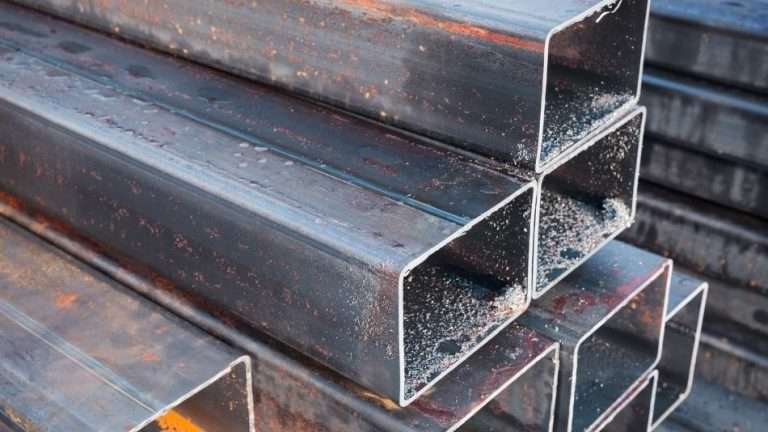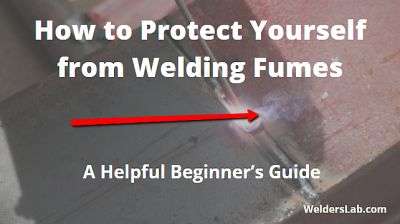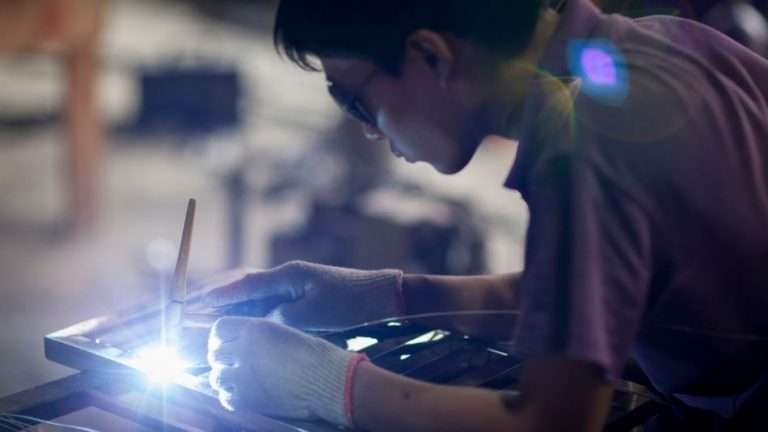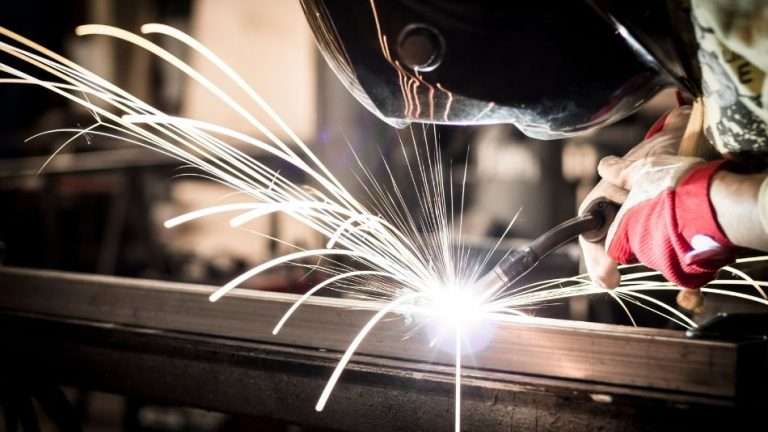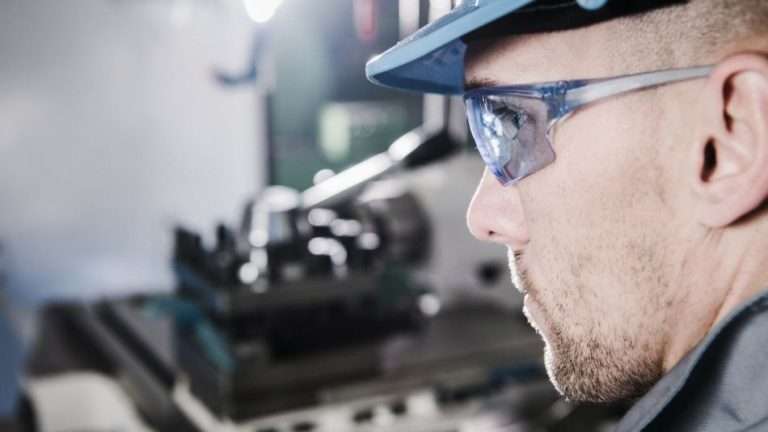Can Welding Give You a Tan or Sunburn – Complete Guide

Can welding give you a tan or sunburn?
If you’ve ever had a sunburn, you know how painful it can be. A welding flash can have the same reaction. I’ve personally experienced this several times over the years, from being burnt on my face, neck, arms, and even my chest. However, these incidents happened because I failed to take the proper preventative measures to protect myself. So can welding give you a sunburn?
Welding can burn your skin from the Infrared and ultraviolet light it gives off. This happens because of uncovered skin, directly or indirectly, from reflective surfaces. You can protect yourself by covering your skin, avoiding reflective surfaces, and putting up welding barriers.
So whether you want to avoid burning your skin by looking for simple methods to prevent this issue or because you are suffering from a welding burn right now and are looking for some relief, keep reading.
Can Welding Give You a Tan or Sunburn
When it comes to welding it produces a very intense bright light. This light is a liquifying metal at temperatures between 10,000 to 15,000 degrees. Believe it or not, that’s hotter than the sun’s surface.
Along with this bright light, welding also gives off ultraviolet and Infrared Light, which you cannot see with the naked eye.
Ultraviolet light is produced by hot objects such as the sun or a welder. However, don’t be alarmed. The UV produced by a welder is very low and can be blocked, much like protecting yourself from the sun.
Then you have IR or Infrared light, produced by the heat a weld gives off. You can’t see it, but you’ll most likely feel it.
In most cases, UV and IR will be blocked by your welding gear, but if you have exposed skin on your neck or arms, it will burn if it received too much.
How Close Do You Have to Be to Get Flash Burn From Welding?
This all depends on how close to the weld and how intense the welding is. If you are close to the weld and the welder runs at 800 amps, it won’t take much to get burnt. Five to ten minutes of direct exposure would likely burn you.
If you’re 100 feet away and only running at 200 amps, burning your skin at that distance will take much more. However, this doesn’t mean you don’t have to worry about anything.
The golden rule I tend to live by is this…
Golden Rule: If someone is welding around you, whether close or far away, always treat it as a weld that can burn you.
If you follow this simple rule, you will avoid getting burned on your skin or eyes. I’ve had employees who’ve made the mistake of thinking they’re far enough away, yet they still burn their skin and eyes.
Now, you might wonder how to protect yourself from this harmful light. Keep reading.
How to Protect Yourself From Getting a Welding Sunburn?
The best way to protect yourself from welding burns is to take preventative measures to avoid these problems altogether. So here are some simple to protect your skin and eyes.
1. Keep Your Skin Covered
The first tip is to keep your skin covered at all times. In most cases, a cotton or leather long-sleeve shirt, pants, and gloves will protect most of your skin surfaces.
I also like to use welding sleeves as extra protection as well. Welding sleeves are additional covers that go on your arms. Below is a set of sleeves I typically wear.
Your arms are one of the closest body parts to the weld, and when welding, the spatter that comes off your weld can often burn holes in your sleeves. With holes in your sleeves, you become more susceptible to burning your skin.
I use these to add an extra layer of protection and keep the intense heat off my arms.
You’ll also want to invest in a decent welding helmet to protect your face. A good welding helmet blocks UV and IR light so you don’t burn your face. This is probably the other closest part of your body to the weld. Below is the helmet I use.
I like this welding helmet because it covers my neck well and prevents harmful light from coming up from underneath me.
2. Avoid Reflective Surfaces
Next, you must also watch for reflective surfaces that could harm you. Most people don’t think about it, but the clothes you wear can cause your skin to burn.
White Clothes. I had one employee who wore white T-shirts to work and found out the hard way the next day. Since white is a reflective color, it would reflect just enough light off his shirt onto his neck and face.
Reflective Surfaces Around You. Next, you must also consider the reflective surfaces around you while welding. If you’re welding aluminum, it can reflect the light and cause it to burn your neck and face, even if you have a good helmet and welding shirt.
To avoid these issues, you may want to consider using neck and overhead covers to protect yourself. Below are a couple of options I’ve used in the past.
With these kinds of covers, you’ll protect your neck and head from reflected UV and IR light.
3. Put Up Barriers
The final tip is to protect yourself from other people who are welding around you. While neck and overhead covers work well for this, sometimes you need a barrier between you and the person next to you.
Here are a few options to consider.
Wood or Metal Block. The option I use in most cases is a wood or metal block. In my shop, we use 2-foot by 4-foot sheets of wood to block welds or 1/8″ sheet metal of the same size.
With this option, it will block the light out completely. However, if the people welding around you are moving constantly, there is a better option.
Welding Curtains. Welding curtains block out most light but are also easier to move around. I prefer the dark green curtains to the brighter yellow or orange curtains because they keep the brightness of the weld down.
How to Treat a Welding Burn?
Now that you have some options to help protect yourself from getting burnt, in this next section, I will go through some tips to help you treat your welding burns.
1. Clean the Burn Area
The first thing you’ll want to do is clean the burnt area. You’ll want to do this because a welding shop is not the cleanest place. You wouldn’t want dirt on that if you have a cut or scrape.
Start by wiping the area with a clean rag with cool soapy water. I’m not particularly eager to use hot water because it doesn’t feel too good on the burn.
2. Aloe Ice
Next, I like to use Aloe Ice on the burnt area. Aloe will help moisturize the burnt skin. Below is a bottle of the stuff I use.
What’s nice about this aloe is that it gives a nice cooling effect after its application. Applying this a few times over the next few days will fix the issue.
However, you may want to go to the next option if you’ve been burnt badly.
3. Burn Cream
You may want to use a burn cream if you’ve been burnt badly. Below are a couple of the options I’ve used in previous situations.
Burn cream is an over-the-counter option to put on the burn area and will relieve the burn. I rarely have to do this, but if the aloe isn’t working, this is your next option.
4. Bandages and Dressing
If things are still not improving, consider using burn relief dressing to wrap and protect the burn.
I’ve never had to use these options, but if you’re in this situation, then this will allow you to wrap it and keep it out of any harmful light and not make the situation worse than it already is.
5. Seek Medical Attention
Finally, it may be time to seek medical attention if the burn is worsening. A lot of times, a quick trip to your family doctor will allow you to get a prescription medication to use.
If the situation is severe, then seek immediate medical attention. I’ve had employees who’ve dealt with this kind of pain in the past, and if you are experiencing severe burn pain in your skin and eyes, you’ll want to take care of it immediately.
How Long Does a Welding Burn Last?
Over the years, I’ve dealt with varying degrees of welding burns. Some not so serious and some very painful moments. However, here is what I’ve found when it comes to how long these types of burns will last
A welding burn will usually last between one to two days, depending on the severity of the burn. With proper treatment and medication, it will heal faster than if you do nothing. If the pain persists after 1 or 2 days, seek medical attention.
I can remember one time in particular when I burnt my face in December of all times, and it felt painful. This happened because I neglected to wear a welding helmet and used my hand to cover the weld.
Covering a weld with your hand once or twice may not do much to burn your skin, but if you do this a whole bunch of times, as I did, it can burn your skin without realizing it.
And like a sunburn, it’s often much later when you realize that you’ve burnt your skin and something is wrong.
Can Welding Burn Cause Skin Cancer?

This is a common question most people have as welders since they are around harmful bright lights. So can welding cause skin cancer?
Welding produces Ultraviolet and Infrared light that are known to cause skin cancers. Overexposure to these harmful lights can increase your chances. Protect your arms, chest, neck, and face. Finally, check your skin for any irregular spots and report them to your doctor.
To learn more about this, check out this article on Cancer.org.
My best advice is to take the preventative measures I’ve covered in this article, which will give the best chances to avoid cancer.
However, this doesn’t mean you will be free of it. Take time to look at your skin to ensure you are not forming any irregular spots. If you do see something irregular then report it to your doctor.
I like to do this when I shower at the end of the day. Doing this regularly will help catch it sooner and allow them to remove it before it gets too serious.
Final Thoughts…
If things like burning your skin and getting skin cancer scare you, remember that you can prevent a lot of this stuff by just taking the proper safety precautions.









